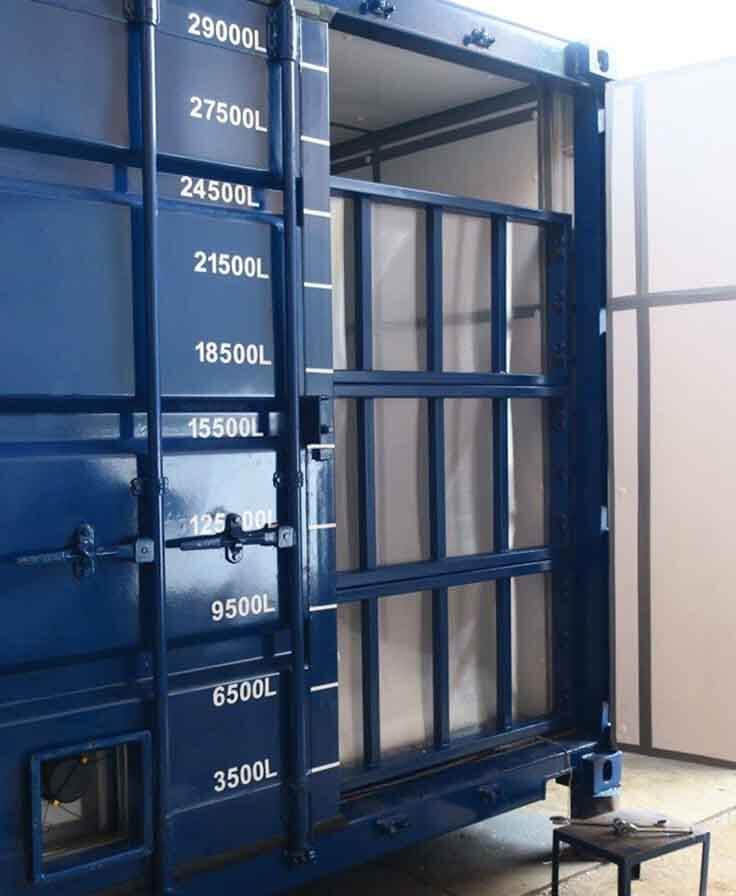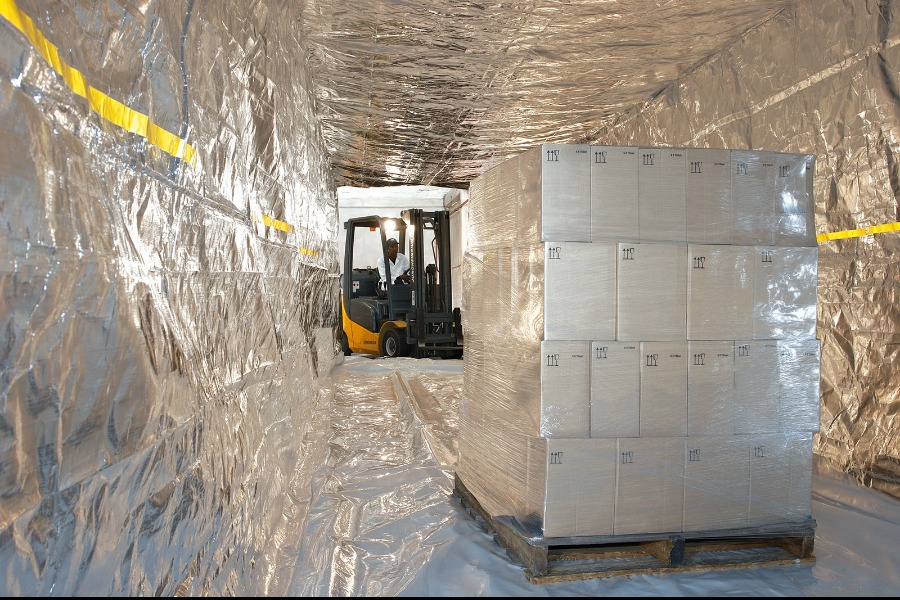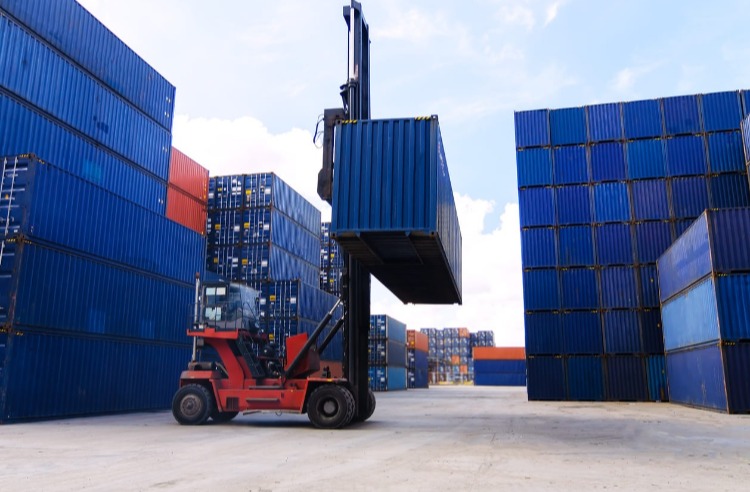Share this post
Your guide to container shipping in the wine industry
Container shipping has contributed to the growth and success of the wine industry for decades. Without the rise of container shipping, the world of wine, beer and spirits would be a lot smaller.
Since the first standard freight container was first created in 1956, manufacturers of wine and other beverages have been using shipping containers to export and import products worldwide.
The standardized shipping container was designed for international transportation and revolutionized the way products are shipped to global consumers. Offering a combination of security, durability, and even protection from the elements, containers transformed local wine producers into international wine exporters.
But, how does container shipping work, what types of containers can wine companies use, and what do importers need to consider when planning their supply chain?
Container Shipping in the Wine Industry: Major Transport Routes
For decades, container shipping enabled wine producers to reach new markets, and has empowered importers to purchase wine, beer and spirits from all over the world.
Even with global trade disruptions, pandemic restrictions, and sociopolitical events in the last few years, container shipping remains the most popular cross-border shipping method. Around 90% of the world’s trade is now powered by sea freight and shipping containers.
Major shipping routes have been established across the globe and common routes include:
Europe to North America
Australia and New Zealand to Asia or North America
South and North America to Europe
South Africa to Europe
South America to North America
In addition to various direct routes, there are also various “intercontinental routes” where wine shipping containers can be trans-shipped through hubs like Singapore, Hong Kong, or Rotterdam, before they finally reach their intended destination. The Panama Canal and Suez Canal, for instance, are two of the biggest maritime “shortcuts” used in shipping.
Types of Containers Used in the Wine Industry
Since the first shipping containers were developed, the ability to trade wine, beer and spirits has evolved to an exceptional scale. The further the opportunity to ship wines highlighted the need to preserve its quality on its journey.
Moving sensitive products, like wine and beer, requires knowledge about the type of container which can be used for each product and on each routing. Beverage logistics experts Hillebrand Gori have introduced a range of solutions to assist with mitigating risks like thermal shock, contamination and bottle damage.
For instance, changes in temperature and humidity in wine containers can cause irreparable damage to products, from premature aging, to color changes, loss of flavor, freshness, or acidity. Wine importers need to consider these risks when choosing one of the three types of shipping containers available:
Dry containers
Dry containers in the container shipping industry are generally used for products not easily affected by humidity or temperature, like spirits. They’re the most budget-friendly choice, and are accessible to companies anywhere in the world.
Dry containers for sea shipping generally come in two sizes (20 feet and 40 feet), and are suitable for shipping packaged products or wine in bulk using flexitanks.
Insulated containers
Valuable in the wine industry, insulated containers are ideal for wines that require protection from condensation, cross-contamination, humidity infiltration and thermal shocks.
Insulation liners offer protection from contamination in a food-grade lining. What’s more, Hillebrand Gori insulation liners can reflect up to 94% of heat, offer an environmentally friendly alternative to refrigerated containers and are the only ones in the market with a breathable membrane to protect against humidity.
Refrigerated containers
When it’s crucial to retain an exact temperature within a container, refrigerated units are essential. In the beverage industry, they are used for wines and beers that are traveling in extreme climate conditions and are sensitive to thermal changes. These containers, otherwise known as reefers, can circulate air like a fridge.
However, reefer containers are a more expensive option, and the least sustainable.
Investing in Container Shipping: Factors to Be Aware of
Choosing the right type of container, and implementing the right process for your shipping needs, can be a daunting prospect. There are numerous factors to consider beyond simply selecting the most effective container option. Businesses also need to be aware of:
Container Weights and Road Limits
The weight of a container can vary drastically, and it’s something businesses must account for when shipping products.. Each country has its own restrictions regarding the weight of containers. For instance, in the US, the general limit is 80,000 lbs (36,287Kg) gross vehicle weight (GVW) for each vehicle. The limit applies to the full weight of the truck, container, products, and chassis.
Aside from the gross vehicle weight limit, companies must ensure vehicles don’t exceed individual axle load limits. Overweight trucks can lead to penalties, fines, and additional costs for unplanned transport, as well as load distribution and handling. Contact the local office in your shipping destination if you’re unsure about weight limitations.
Number of wine pallets per container
Containers offer a convenient way to ship large amounts of wine at once. However, the quantity of pallets that can be added to a container will depend on numerous factors. Available floor space, loading configuration and pallet size are all essential factors, as well as road weight limits.
The common domestic format for shipping wines in the US is around 12 bottle cases of 750 ml bottles, rather than the 6 bottle cases available elsewhere. This can impact your warehouse pricing, and how you organize your shipments. Additionally, while pallets come in standard sizes, their availability varies depending on your collection location.
Packaging Options
Wine can be packaged for container shipping in a variety of ways. One of the most common methods is to ship wine on pallets made of wood or plastic. Most of these pallets measure 1 meter by 1.2 meters in the US, compared to 0.8 meters by 1.2 meters in Europe.
Wine is often stacked four layers high, and you can typically load up to 56 cases per palette. Outside of pallet options, companies can also consider using loose loading methods. Non-palletized, or loose-loaded wines are often shipped on a slip sheet.
VGM
The Verified Gross Mass or “VGM” of your products will also be a crucial consideration. VGM refers to the full weight of your wine products, covering dunnage and bracing, and the tare weight of your container. SOLAS guidelines require shippers to provide VGM details in a shipping document before a vessel is loaded. Any container without VGM details can be rejected from shipping.
This means companies need to ensure they’re accurately calculating their VGM and providing the right documentation to regulatory bodies throughout the shipping process.
Mastering Container Shipping
Container shipping in the wine industry can be a complex process. It requires careful planning and execution to ensure you’re using the right containers and the right strategies to protect your brand, and your products.
If you need help picking the right container for your product, or implementing the best solutions for your supply chain, contact Hillebrand Gori, a shipping company specialized in wine, beer and spirits transportation. We offer a variety of container options, risk management solutions, and expert guidance to help protect your wine, beer and spirits on their journey.
Published 17th October 2023, updated 5th January 2024
Container shipping is a method of transporting products in large, standardized containers. It allows for easy handling and transfer between transport modes such as ships, trains and trucks.
The cost of shipping a 40-foot container varies depending on your products’ destination, quantity, size and sometimes, weight. Contact a freight forwarder, like Hillebrand Gori, for a personalized quote.
The timeline for shipping a container varies depending on the origin and destination of your shipment. Transit times can vary based on weather, customs delays and peak shipping seasons.
The specific documents needed for container shipping vary based on the type of product and destination country. However, some common documents include the bill of lading, certificate of origin, commercial invoice and packing list. Work with a freight forwarder who can help you obtain all necessary documentation for your shipment.

.png?sfvrsn=fc4f657e_1)



